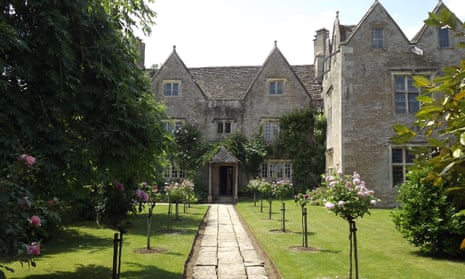“I am writing among the gables and rook-haunted trees, with a sense of the place being almost too beautiful to live in,” wrote William Morris in 1872, the year after he co-signed the lease on Kelmscott Manor in Oxfordshire, which next week reopens to the public after a three-year, multimillion-pound refurbishment. Anyone who has seen designs by Morris will have seen motifs inspired by Kelmscott: Strawberry Thief, for instance, or Willow Bough.
Morris, as his biographer Fiona MacCarthy put it, “had a sense of place so acute as to be almost a disability”; physical surroundings were so foundational to his thinking that MacCarthy listed locations as primary sources. Kelmscott, in particular, was central to his most deeply held beliefs – beliefs that were not only influential then, but are arguably even more important now.
The beauty was not incidental: it was at the heart of his radical, actively fought-for socialism. His was a capacious definition of beauty, a beauty of wholeness: of household goods, of town planning. It stood against the alienating specialisations of capitalism, arguing for direct access to the making of things, however humble; making the case that work – and in fact all life, seriously undertaken – could and should be a pleasure and an art. And unlike the more brutalist, nature-dominating instincts often seen in communism, living in harmony with the natural world was paramount. “I have more than ever at my heart,” he wrote in 1880, “the importance for people of living in beautiful places; I mean the sort of beauty which would be attainable by all, if people could but begin to long for it.”
That the embroideries, wallpapers and tapestries he made in accordance with these principles were – because of their resultant expense and the education required to appreciate them – inaccessible to the majority only intensified his anger at the inequalities deepening around him. And as Anna Mason points out in her introduction to a major retrospective published on the 125th anniversary of his death, Morris’s socialism was not parochial: “the Indian or Javanese craftsman may no longer ply his craft leisurely ... a steam-engine is set a-going at Manchester … and the Asiatic worker, if he is not starved to death outright … is driven himself into a factory to lower the wages of his Manchester brother-worker” – an indictment of globalisation before globalisation was even a word.
In Morris’s propaganda novel News from Nowhere (full of descriptions of Kelmscott Manor), the narrator wakes on the banks of the Thames. The polluted waters have cleared. England has become a socialist paradise, with equality between classes and sexes (Morris was public in his support of women’s rights), no private property, no prisons. No parliament either, which did not stop Labour politicians from Clement Attlee to Aneurin Bevan (who recited Morris to help him get over his stammer) to Tony Blair from citing him as a major influence. We may not want to go quite as far as Morris suggests, but the underpinning ideas – the thoroughgoing rethinking of capitalism, the radical wholeness and moral heft of his vision – have an urgency that has only increased with time.
